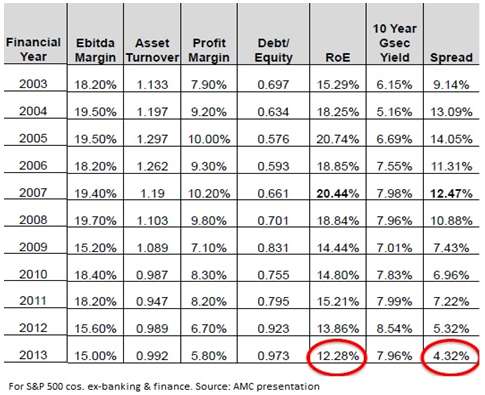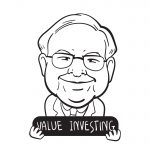To ride the economy’s ‘consolidation phase’
For those of you who believe that the economy, as well as corporate activities, is going through a consolidation phase and it may take a couple of years before the environment fully turns around, what should be your strategy in equities?
IDFC Mutual has come up with its answer in the form of its three-year close-ended new fund offer – IDFC Equity Opportunity Series 2. The NFO is open from January 13 to January 24.
The Idea
This new fund will seek to benefit from companies that have the potential to benefit from a higher operating leverage. So how exactly does operating leverage work? Theoretically put, when a small increase in sales can result in far higher increase in operating profits for a company, then it enjoys higher operating leverage.

In the current environment IDFC Mutual sees operating leverage occurring in the following ways:
– One, in prolonged slowdown phases such as the present one, smaller companies with poor balance sheets or those from unorganized segments get eliminated, resulting on consolidation within the industry. That leaves larger players with sound balance sheets and capacities enough ground to increase their market share, as well as improve pricing power.
A classic example would be the telecom sector, where cancellation of licences in more than 100 circles led to elimination of players in these areas and also resulted in better pricing power of the larger players. This was evident in the increase in average revenue per user (ARPU).
– Two, companies that have capacities in hand and are ready for a take off, soon as the demand scenario in the economy improves, also tend to benefit the most in the face of a recovery. This is because operating at low capacities result in sub-optimal margins for companies in a slowing economy. Such companies also tend to have depressed return on equities that would struggle to cover their cost of capital.
Therefore, earnings tend to become highly sensitive to any small jump in capacity utilization.
Also, players with ready capacities in hand to meet demand pick up benefit the most. The cement industry, for instance, saw some asset sales that resulted in acquisition of capacities by a major player, at a price much lower than the cost of setting up a new unit. Acquirers such as this player will have capacities in hand to benefit immediately, on demand pick up, even as others may take time building capacities on the face of a recovery.
– Three, often times, a change in product mix, resulting in better pricing, can result in superior operating profits and margins even if sales per se does not jump significantly. Companies in the FMCG sector, to name one, have benefitted and are further expected to gain from such a strategy.
Fund Strategy
It is evident that the above ideas would take time to translate and would require a buy and hold strategy for most part. This is one reason behind that close-ended nature of the fund. Also, once the theme plays out, the upside may not be too high. That appears to be the reason for the fund to have a fixed tenure (3 years) with an option to switch to any of its other funds post the period.
IDFC Equity Opportunity Series – 2 will seek to hold a compact portfolio of anywhere between 25-3o stocks.
How different will this portfolio be from its earlier Series I (which was also a close ended fund)? The earlier Series, despite a similar theme, had picked stocks on the basis on their under valuation. Hence, its portfolio has a good dose of mid and small-cap stocks in it.
This fund, on the other hand, can be expected to have a decent holding of large caps, simply because they would typically be companies with a sound balance sheet, offering superior products, already commanding reasonable market share and having ready capacities to spare when the time comes.
What We Think
Equities, as a risky asset class, are required to deliver returns far higher than government securities to compensate for the risk. In years such as 2006 and 2007, the difference between the return on equity of companies in the S&P 500 index and the yields of 10-year G-Sec was as high as 11-12 percentage points. In 2013, this was as low as 4.3 percentage points – that is, equities returned much lower risk-adjusted returns (see table for the spreads).
Now this situation is only expected to mean revert – that means the spread should see an increase. ROEs thus, are a good measure of looking at pockets of opportunities in the market in a slump phase.
In that sense, the fund’s theme appears to be reasonably timed. That said, even a three-year lock in could be a short time frame to play such a theme to its full potential. Hopefully, a switch to funds such as IDFC Premier Equity or IDFC Sterling Equity, post the lock-in could ensure that the upside is fully captured.
Interestingly, the Series 1 fund generated 21% (absolute) returns since its launch in April 2013, topping almost all diversified funds, except sector and international funds and a couple of small-cap funds.
The new Series 2 fund will be managed by Punam Sharma.







@ Vidya,
Timely & useful article as always.
Just one correction; Switch will be available into all IDFC Open -Ended Schemes, but NOT in IDFC Premier Equity Fund.
these are closed ended funds – there is no way to come out if the fund start performing poor 🙁
same goes for series 1 too – even though the return look good now
Dear Madam
Thanks for your regular updates & review on different aspects. It is always useful.
Pls give us your review on NFO of DSPBR Strategic Assest Allocation Fund.
Regards
Dhananjay Kale
Dhanashree Investments
Thanks Dhananjay. Will review soon. Vidya
Dear Madam
Thanks for your regular updates & review on different aspects. It is always useful.
Pls give us your review on NFO of DSPBR Strategic Assest Allocation Fund.
Regards
Dhananjay Kale
Dhanashree Investments
Thanks Dhananjay. Will review soon. Vidya
@ Vidya,
Timely & useful article as always.
Just one correction; Switch will be available into all IDFC Open -Ended Schemes, but NOT in IDFC Premier Equity Fund.
these are closed ended funds – there is no way to come out if the fund start performing poor 🙁
same goes for series 1 too – even though the return look good now